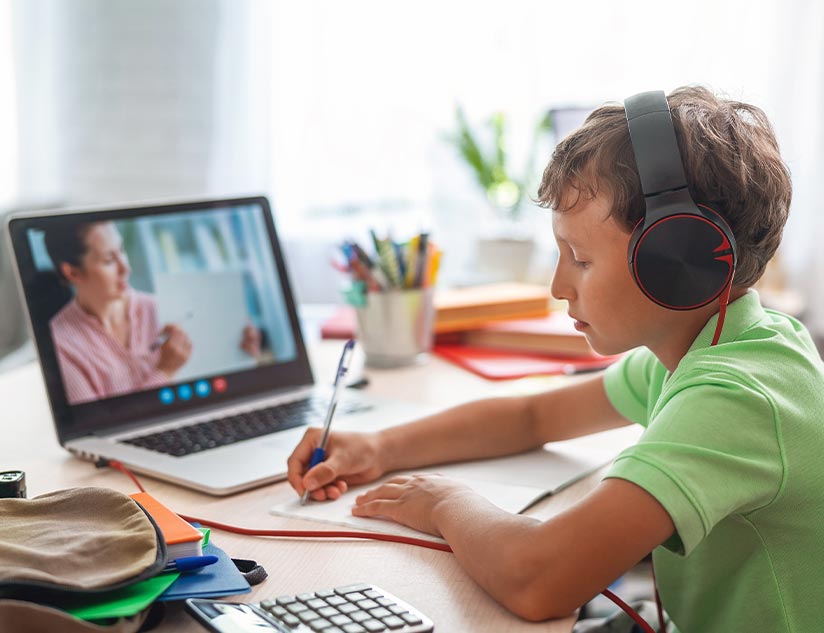General trends towards the Bring Your Own Device (BYOD) are increasing rapidly, creating new learning opportunities for pupils. Apart from making learning exciting, this concept allows content to be accessible to learners all the times. It is the philosophy of bringing your own tech device to school which can be developed into a learning procedure under teacher’s supervision.
Originally when BYOD was introduced in 2009, the intent was to reduce the technology cost in the schools and at workplace. Gradually it gained a lot of popularity among students, thanks to technology advancement which has always helped young minds grow faster and smarter. BYOD is also known as BYOT (Bring Your Own Technology) or BYOP (Bring Your Own Phone) or BYOPC (Bring Your Own PC) meaning bringing your own digital devices to classrooms that may assist learners in studies. When monitored by teachers, it can prove to be highly beneficial in the K-12 setting – with better learning outcomes, and more engagement amongst students. Let’s see how.
As classrooms transform from a purely offline to either blended or online learning setting, the point of discussion now is the wisdom of getting your own device to school. The Bring Your Own Device (BYOD) movement is gaining strength along with exponential growth in the usage of mobile devices. In 2017 itself, MagicBoxTM saw a steep rise in the number of users accessing the platform through mobiles devices and tablets. There was an increase in traffic generated through mobiles and tablets by 40% in 2017 as compared to 2016. Is there more to mobile technology than just the glamour? And the big question, does BYOD actually improve learning outcomes?
BYOD Advantages:
With BYOD making its way to K-12 classrooms, it becomes imperative to understand that advantages it has to offer.
- Convenience: Since the individual learner’s mobile device keeps all information in one place, it helps them to access the course material conveniently. Since they have the device at all times, they can experience seamless learning as BYOD bridges the gap between learning at home and in school. Thus, learning becomes easier to achieve, as the learners can integrate the device into their daily lives. MagicBoxTM platform is compatible with multiple devices, making it convenient for learners to learn on-the-go. Its content has been downloaded 1,171,937 times, and 67 million pages have been read to date. Read more: MagicBoxTM Success Story – Improving Student’s Engagement Online
- Accessibility: Since a BYOD device is readily accessible 24*7, all material gets stored in the same place. The student can thus access all their course material at any time and any place.
- Familiarity: The fact that learners are familiar with their devices adds to the comfort factor, enabling them to be more open to academic concepts. This especially helps if the concepts happen to be complex and need learners to feel psychologically comfortable with the subject matter.
- Cost-effectiveness: Since schools don’t have to invest in devices, BYOD proves to be an economically viable option. Moreover, computer labs are expensive which is why a lot of libraries are moving away from computer labs. BYOD is a cost-effective option since it eases the demand imposed on schools by having students replace the technology integral to e-Learning.
- Task ownership: Since learners use their device, they have a greater sense of responsibility towards the device which extends to academic tasks such as timely completion of assignments. Thus, BYOD indirectly encourages a sense of task ownership in students.
- Engaged learning: When learners control their learning, it is easy to execute projects outside the classroom. While technology can make learning fun, the interactive nature of BYOD makes it even more engaging. Digital books often have free supplemental resources and interactive tests that monitor progress and provide immediate feedback. Thus, giving learners authority over their own learning is best since it allows the teacher to become a manager of learning rather than a direct source of information.
- Ease for teachers: BYOD allows teachers to add educational resources, interact with students, and give their feedback at any point in time. With some great BYOD strategies put in place, it becomes much easier for teachers to incorporate learning through devices.
BYOD Disadvantages:
Technology has always improved learning when used with a purpose and despite being so beneficial, BYOD is not free from limitations. Some of the commonly faced challenges with BYOD are:
- Tech issues: Internet connectivity and internet speed issues can be real impediments for learners to study at home. MagicBoxTM supports offline access to its content, which means learners don’t need the internet to learn. Moreover, schools are still struggling with technology in classrooms – difficulties with multiple devices, internet bandwidth constraints, and limited tech support. What’s more, tech policies are more difficult to implement on personal electronics than on the ones owned by schools.
- Device issues: A major issue with the concept of BYOD is that it tends to highlight pre-existing inequalities in the classroom since different learners have different types of devices. This amplifies or brings to light the inevitable social inequalities that may exist in a classroom.
- Distraction: It’s no secret that it’s easy for pupils to get distracted with constant access to a mobile device. When these young minds spend a lot of time in a classroom, it’s easier for them to lose control over their online activities, as the lines between work and play become blurred.
How to make the most of BYOD – The way forward
While BYOD is a largely beneficial practice for today’s changing classrooms, educators must implement it with caution and only after a thorough analysis of its pros and cons. If you are in the process of developing a BYOD policy, here are some best practices to be borne in mind for enhanced outcomes:
- Specify permitted devices: Because learners today have plenty of choices at their disposal, educators must specify what BYOD for them entails. Is it Android vs iOS? Some devices that make sense for a classroom are mobile phones, e-readers, and cloud-enabled devices. This also helps bring uniformity to the classroom.
- Have a security policy: There is always a chance of accessing sensitive information when the devices are connected to the school’s server. Learners must configure their devices with complex passwords for protection.
- Decide which apps to allow: Educators must ensure students don’t download, install or make use of applications that are potential security or legal threat.
e-Learning does make a positive difference to how students learn. In today’s information age, competent, engaged teachers are more necessary than ever. What is needed is a balance of a BYOD policy with healthy teaching interaction to maximize learning.














